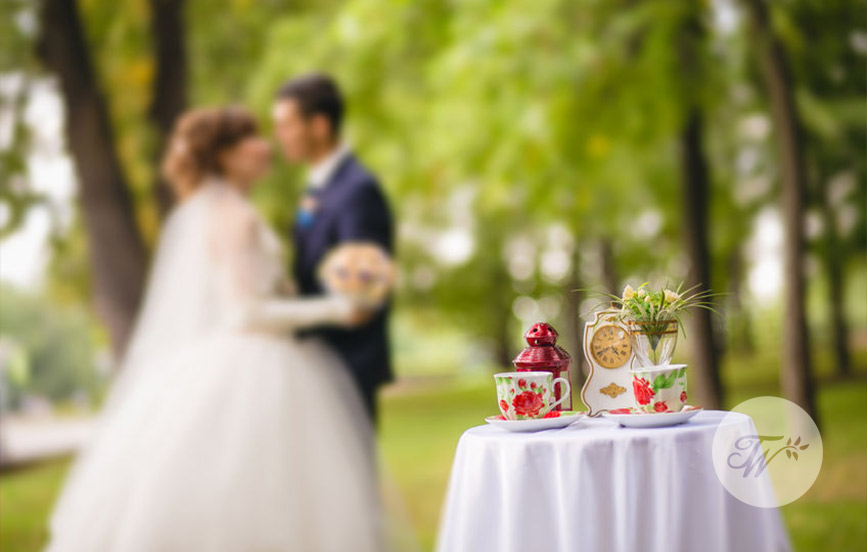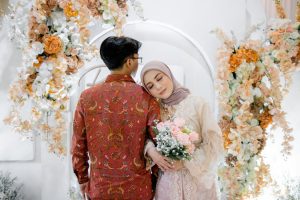The Western custom of a bride wearing a white wedding dress came to symbolize purity, not virginity, in the Victorian era. Within the “white wedding” tradition, a white dress and veil is not considered appropriate in the second or subsequent wedding of a widow or divorcee. The specific conventions of Western weddings, largely from a Protestant and Catholic viewpoint, are discussed at “white wedding“.
A wedding is often followed or accompanied by a wedding reception, which in some areas may be known as the ‘Wedding Breakfast’, at which an elaborate wedding cake is served. Western traditions include toasting the couple, the newlyweds having the first dance, and cutting the cake. A bride may throw her bouquet to the assembled group of all unmarried women in attendance, with folklore suggesting the person who catches it will be the next to wed. A fairly recent equivalent has the groom throwing the bride’s garter to the assembled unmarried men; the man who catches it is supposedly the next to wed.
The Wedding Breakfast is one occasion where every member of the family who has had at least some role in the wedding is present. It is also important as the first time the newly married bride and groom share their first meal together as a lawfully wedded couple. The word Breakfast comes from a more ancient tradition of fasting before the wedding ceremony, the Wedding Breakfast is therefore ‘breaking that fast’. The modern Wedding Breakfast includes the service of food to guests that can range from traditional roasts, buffets, or regional treats such as in the case of a London Wedding[1] in the ‘East End’.
Another Victorian tradition is for brides to wear or carry “something old, something new, something borrowed, something blue” during the service. It is considered good luck to do so. Often the bride attempts to have one item that meets all of these qualifications, such as a borrowed blue handkerchief which is “new to her” but loaned by her grandmother (thus making it old). Another addition to this custom is to wear a coin in one’s shoe to bring prosperity.
Source: Wikipedia.org





















